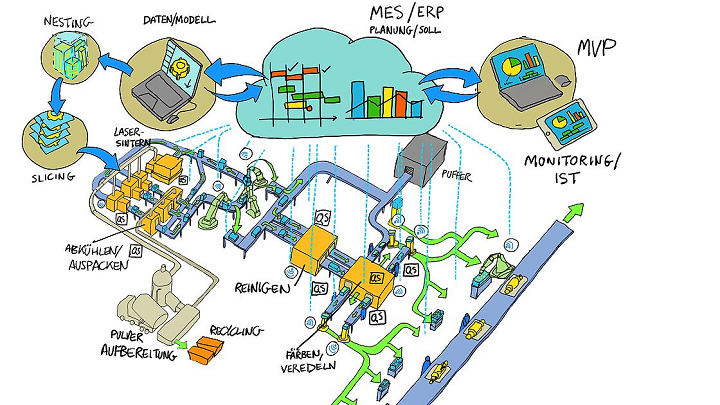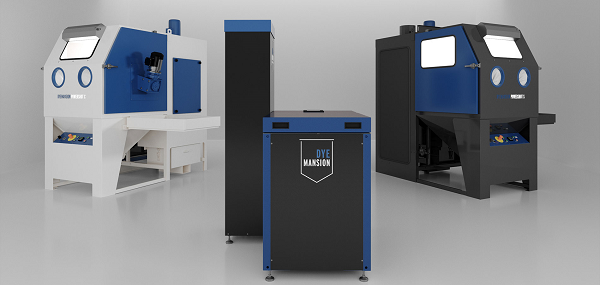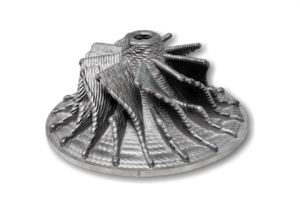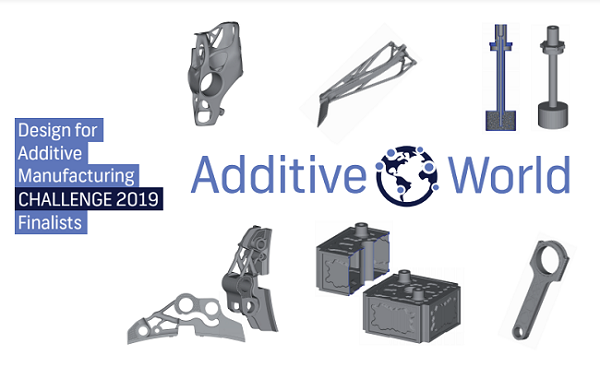3D Printing News Briefs, May 18, 2020: Fraunhofer, Formnext, Visagio & DiManEx, BCN3D Technologies
In today’s 3D Printing News Briefs, Fraunhofer will soon discuss adoption of Industry 4.0-related technologies in a webinar, and we’ve learned that Formnext 2020 is still planned for this November. Moving on, Visagio and DiManEx have announced a partnership. Finally, BCN3D’s technology was used to make an interesting event installation.
Fraunhofer’s Industry 4.0 Webinar
![]() Tomorrow, May 19th, the Fraunhofer Project Center (FPC) at the University of Twente will be holding a free webinar called “The Road to Digitalisation” that explains some of the challenges in adopting technologies related to Industry 4.0, such as 3D printing, as well as the solutions. Industry 4.0 is about optimization, and can offer companies many benefits, such as increased revenue, better quality, and reduced cycle times and costs. But, it can be a tough journey to start, and companies looking to start could use some help.
Tomorrow, May 19th, the Fraunhofer Project Center (FPC) at the University of Twente will be holding a free webinar called “The Road to Digitalisation” that explains some of the challenges in adopting technologies related to Industry 4.0, such as 3D printing, as well as the solutions. Industry 4.0 is about optimization, and can offer companies many benefits, such as increased revenue, better quality, and reduced cycle times and costs. But, it can be a tough journey to start, and companies looking to start could use some help.
“Industry 4.0 is all about optimization; from managing big data to efficiency in the production line. All this aims at enabling businesses to make quicker, smarter decisions while minimizing costs. This webinar sets out to explain the challenges and to offer solutions in the adoption of I4.0 related technologies.”
The webinar, featuring Join Biba Visnjicki, Managing Director of FPC, and Thomas Vollmer, Head of Production Quality Dept. from Fraunhofer IPT, will last 60 minutes; register for free here.
Formnext 2020 Still a Go in Frankfurt
 As many places in the world are cautiously reopening after recent mass shutdowns due to the COVID-19 pandemic, we need to look to the future. In that vein, Mesago Messe Frankfurt GmbH is still planning to hold the AM industry’s biggest event, formnext 2020, this November 10-13. Recently, the Federal Government and the Federal States of Germany ruled that trade shows are no longer under the ‘major events’ category for health risks, but the health of all the employees, exhibitors, and visitors are still considered the highest priority if the event does indeed take place this fall. That’s why the exhibition organizer is working around the clock to develop an updated health concept, such as introducing contact tracing and decreasing visitor density, along with a supplementary digital/virtual program.
As many places in the world are cautiously reopening after recent mass shutdowns due to the COVID-19 pandemic, we need to look to the future. In that vein, Mesago Messe Frankfurt GmbH is still planning to hold the AM industry’s biggest event, formnext 2020, this November 10-13. Recently, the Federal Government and the Federal States of Germany ruled that trade shows are no longer under the ‘major events’ category for health risks, but the health of all the employees, exhibitors, and visitors are still considered the highest priority if the event does indeed take place this fall. That’s why the exhibition organizer is working around the clock to develop an updated health concept, such as introducing contact tracing and decreasing visitor density, along with a supplementary digital/virtual program.
“We remain convinced of the unique value and advantages of a physical exhibition. And although digital interaction will never be able to replace face-to-face contact, it does offer more scope than previously thought possible only a few weeks ago,” stated Sascha F. Wenzler, Vice President of Formnext, Mesago Messe Frankfurt GmbH.
“Ultimately, even in these challenging times, we want to organize a trade show that is as responsive as possible to the current situation and the needs of participants and the market.”
Visagio and DiManEx Partnering to Improve AM Supply Chains
Management consultancy Visagio Ltd and DiManEx BV are partnering to strengthen end-to-end 3D printing usage in supply chains. Companies are looking to conquer supply base disruptions, and by pairing Visagio’s supply chain services with DiManEx’s end-to-end 3D printing platform, they can do so by digitizing their inventory and 3D printing parts on demand, which can delivered all over the world. The collaboration is a representation of how both companies address market needs, especially in these challenging times as COVID-19 disrupts the global supply and demand process.
“Companies are increasingly looking for ways to optimize their supply chains and mitigate risks, such as those brought about by pandemics or geo-political tensions. Our platform embeds 3D printing in supply chains easily, realising the concept of ‘Digital Inventory at your Fingertips, Ordered at a Click of a Button’. Coupled with Visagio’s industry and management expertise, this is a winning combination for supply chain optimization,” said Tibor van Melsem Kocsis, the Founder and CEO of DiManEx.
3D Printed Cisco Live 2020 Installation
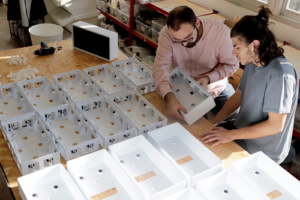
Thanks to 3D printing, it was possible to quickly iterate not only the main design, but also all the smaller parts of the internal mechanisms.
Speaking of collaborations, Barcelona data interpretation firm and design studio Domestic Data Streamers pairs data and arts with storytelling to develop “participatory projects” for community building and education. Its workshop has long used 3D printers from BCN3D Technologies, and recently turned to the technology again to create an installation for the Cisco Live 2020 event. The studio wanted to give attendees “a better experience” by displaying the event schedule on an interactive Recommendation Wall of clickable screens; once clicked, the animated image turned into a QR code, which visitors could scan for more information. The screens had to be custom-made, and so Domestic Data Streamers turned to its in-house printer farm, and the BCN3D Epsilon 3D printer. They used PETG to print over 40 of the main covers in just four weeks, which equaled major cost savings.
“The printers work very well, we count on a very high success ratio, and the support from the team is always quick and helpful,” said Pol Trias, the Head of Design at Domestic Data Streamers.
“It gave us great agility when it comes to functionally and aesthetically validating the designs at a very low cost…our processes were more efficient and much faster thanks to our BCN3D Epsilon.
“This could not have happened without 3D printing. For a project like this one, where you want high-quality results in a short time and within a limited budget, there is no better option than 3D printing.”
You can learn more about the project here, or check out the video below.
Discuss these stories and other 3D printing topics at 3DPrintBoard.com or share your thoughts in the Facebook comments below.
The post 3D Printing News Briefs, May 18, 2020: Fraunhofer, Formnext, Visagio & DiManEx, BCN3D Technologies appeared first on 3DPrint.com | The Voice of 3D Printing / Additive Manufacturing.
POLYLINE Project: Developing Digital Production Line for 3D Printing Spare & Series Automotive Parts
Because 3D printing can ensure complex structures and geometry, mass production of individualized products seems closer than ever. But, since standards are somewhat lacking across process chains, and automated levels of handling and transport processes are low, it’s only possible to achieve horizontal and vertical AM integration in production lines on a limited basis. Additional obstacles include limited monitoring and a lack of transparency across the process chain, due to a non-continuous digital data chain at lots of interfaces. But the potential benefits of integrating AM into assembly and series production lines in the automotive industry are great, which is why the POLYLINE project was launched.
 With 10.7 Mio. Euro in funding by the German Federal Ministry of Education and Research (BMBF), this “lighthouse project” is bringing together 15 industrial, science, and research partners from across Germany with the shared goal of creating a digital production line for 3D printed spare and series automotive parts.
With 10.7 Mio. Euro in funding by the German Federal Ministry of Education and Research (BMBF), this “lighthouse project” is bringing together 15 industrial, science, and research partners from across Germany with the shared goal of creating a digital production line for 3D printed spare and series automotive parts.
The three-year project officially began at a kick-off meeting of the consortium partners this spring at the Krailling headquarters of industrial 3D printing provider EOS, which is leading the project. The other 14 partners are:
- The BMW Group,
- Grenzebach Maschinenbau GmbH,
- 3YOURMIND,
- Additive Marking GmbH,
- DyeMansion GmbH,
- Bernd Olschner GmbH,
- Optris,
- Krumm-tec,
- Paderborn University,
- Fraunhofer IGCV,
- Fraunhofer IML,
- TU Dortmund University,
- University of Augsburg, and
- University of Duisburg-Essen
BMBF is funding POLYLINE as part of the “Photonics Research Germany – Light with a Future” program in order to set up AM as a solid alternative for series production. The resulting next-generation digital production line will 3D print plastic automotive parts in an aim to complement more traditional production techniques, like casting and machining, with high-throughput systems.
The project is looking to disrupt the digital and physical production line system, and is using an interesting approach to do so that, according to a press release, “takes a holistic view and implements all required processes.” To succeed, all of the quality criteria and central characteristic values from the CAD model to the printed part need to be recorded and documented, and individual production sub-processes, like the selective laser sintering, cooling, and post-processing, will be automated and added to the production line. For the first time, all technological elements of the SLS production chain will be linked as a result.
Per the application partner’s requirements, the production line will be realized with “a high degree of maturity,” and uses cases for POLYLINE will include large amounts of both serial and customized components.
Each partner will add its own contribution to the POLYLINE project. Beginning with the leader, the EOS P 500 system will have real-time monitoring and automated loading of exchange frames added to its features; the printer will also be embedded in an automatic powder handling system. Premium automotive manufacturer the BMW Group, already familiar with 3D printing, has a massive production network of 31 plants in 15 countries, and is creating a catalog of requirements for the project to make sure that the new line will meet automotive industry standards. Additionally, the demonstrator line will be set up near its Additive Manufacturing Campus, and cause-and-effect relationships will be jointly researched.
Industrial process automation specialist Grenzebach will be responsible for material flow and transport between AM processes, as well as helping to develop automated hardware and software interfaces for these processes. 3YOURMIND is setting up a data-driven operating model, which will include “qualified digital parts inventories, orders processing, jobs and post-processing planning and execution, material management, and quality control,” while software solutions developer Additive Marking is focusing on quality management optimization and resource efficiency.
Post-processing specialist DyeMansion will develop a process for certified, UV-stable automotive colors, create Industry 4.0-ready solutions for cleaning and mechanical surface treatment with its PolyShot Surfacing (PSS) process, and contribute its Print-to-Product platform’s MES connectivity. Bernd Olschner GmbH will offer its customer-specific industrial cleaning solutions, Optris will make fast pyrometers and special thermal imaging cameras adapted for plastic SLS 3D printing, and air filter systems manufacturer Krumm-tec will work to upgrade the manual object unpacking process.
Along with other project partners, Paderborn University is “working on the horizontal process chain for the integration of additive manufacturing in a line process,” while the Fraunhofer Institute for Casting, Composite and Processing-Technology IGCV is developing a concept for POLYLINE production planning and control, which will be tested in a simulation study for scalability. The Fraunhofer Institute for Material Flow and Logistics IML will work on “the physical concatenation of process steps,” paying specific attention to flexibly linking the former manual upstream and downstream AM processes.
TU Dortmund University will help apply deep learning, and implicit geometric modeling, for data preparation and analysis, along with online monitoring and quality management, in order to achieve sustainable automation and efficiency for the project. The University of Augsburg’s Chair of Digital Manufacturing works to integrate AM processes into current production methods, and will apply its expertise in this area to the POLYLINE project, helping to develop strong vertical process chains. Finally, the University of Duisburg-Essen will focus on creating quality assurance for the material system, and its laser sintering process.
Discuss this and other 3D printing topics at 3DPrintBoard.com or share your thoughts in the Facebook comments below.
The post POLYLINE Project: Developing Digital Production Line for 3D Printing Spare & Series Automotive Parts appeared first on 3DPrint.com | The Voice of 3D Printing / Additive Manufacturing.
3DPrint.com Interviews 3D Printing Pioneer, Professor Ian Gibson of the University of Twente
I’ve been reading Ian Gibson‘s papers for years now. He has written many insightful articles delving deep into metal, polymers, sintering, concrete, welding, medical applications and the industrialization of 3D printing. This 2016 paper on Design for Additive Manufacturing is one of the most useful things you can find online for 3D printing, while this concrete 3D printing article is a great primer on that part of our industry. He is also one of the authors of the influential book Additive Manufacturing Technologies which has helped many students worldwide to understand 3D printing. Ian has a clear mind and a wealth of 3D printing knowledge and experience. To my surprise, he was now a Professor at the University of Twente. He moved to the Netherlands to be the scientific director of the Fraunhofer Project Centre in complex systems engineering. This arm of the huge German Fraunhofer siblings aims to bring a deep understanding of 3D printing and related developments to the Netherlands. The Center hopes to partner with business in order to make 3D printing for manufacturing a reality. Snagging Gibson is a real coup for both the University and Fraunhofer and it bodes well for their attempts to make manufacturing with 3D printing more commonplace.
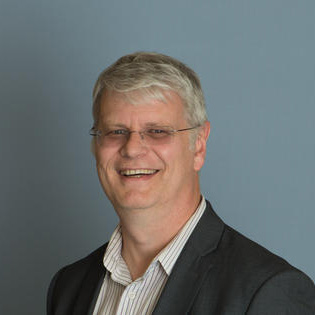
First off, why Twente?
I originally turned down the opportunity. It’s hard to move away from somewhere like Australia, even though it is very isolated from the rest of the world. My mind was changed for two primary reasons. First is the Fraunhofer. The opportunity to be involved with such a well-know and respected organisation is a huge attraction. The second is the culture of the University of Twente. There is a huge amount of respect for education and research that many other universities have turned (in my opinion) away from and into too much of a business. I, therefore, feel very much at home, even with the huge challenges before me, including learning Dutch by the way.
How do you teach the next generation of students about AM?
These days, good educators have changed from knowledgable lecturers to experienced facilitators. Following on from the previous question, I have been an early adopter and heavily involved in project-based learning. This is a refinement of problem-based learning that allows a teaching programme to link fundamental learning requirements to the problem space within projects. In the past this was difficult to do because of the time required to develop the skills in manufacturing as well as the planning and fabrication overheads. AM directly addresses this issue, particularly in the ideation and design iteration phases of product development. The best way to teach students is through immersion. I see my job as not to teach them how to use these machines but to guide them through the design processes with the benefit of my experience and knowledge of what others have done and are doing around the world.Of course, this applies best to entry level AM technologies. For the higher level concepts and technologies, my approach is to harness the enthusiasm from students who express a desire to learn more by hooking them into specific industry and research driven projects.

Will 3D Printing be a revolution in all manufacturing, or only in some areas?
I am not a fan of the word ‘revolution’. I much prefer to use the word ‘evolution’ and we can see that AM has made its way through time gradually improving to a point where it is suitable for manufacture in more and more instances. In my presentation slides, I often like to make a veiled reference to the Star Trek replicator, which is the ultimate AM in my view, capable of creating anything by assembling at a molecular level. My view is that if we ever get to that stage then it will be “3D printing Jim, but not as we know it”. Having said that, everything is improving in AM, speed, accuracy, material properties, cost. If we see the variation of Moore’s law for AM technology, then we may see AM pervasive in all manufacturing. However, I wouldn’t hold my breath, it will take time and many more developments.
How can we do proper QA for 3D printing?
Making the systems more intelligent would be a start. If we can interrogate the systems during build more effectively then I can see QA being a lot easier. The other consideration is to ensure that simulation tools are able to more accurately determine the final part properties. If we can do that, then we should be able to carry out relatively simple in-build tests to verify the predictions.

“Parts made by Robert Leen, a student and technical assistant in my team at Deakin University. A very talented designer and AM practitioner”
How do we eliminate labor in 3D printing?
This is the evolutionary process I was referring to earlier. Small changes that make supports easier to remove, finishing methods, more accurate AM machines, etc. They will all move towards reducing labour requirements (amongst other things) that will gradually make them more efficient.
What will the Fraunhofer Project Centre at the University do?
First off, we are not just promoting AM. There are a number of pillars of activity in the FPC, many of which are related to AM as a tool that must therefore be compared against other tools. Our purpose at FPC is to assist manufacturing industry in elevating their capacity. When there are so many options available to you, it is helpful to have an entitiy like the FPC to help you navigate this labyrinth. We also see ourselves as a conduit to much of the excellent research that is being carried out at the University of Twente. Basically I would say that if you’re a company looking to invest in new technology that in some way will change your products and/or processes, consider coming to see us as a potential partner.
Who would you like to partner with?
We are looking to work with forward-thinking manufacturing companies, independent of size or background. Some of that may involve linking some of the larger companies to SMEs. Our objective is to create an environment for innovation and collaboration where we can all help and learn from each other.
What is holding AM back in medical?
The easy answer to this is related to legislation and certification. AM is most well-suited to customised or patient-specific applications. This means that many AM products are unique. Medical approvals for devices are primarily based on population studies, ensuring that a generic design can work for many people. AM turns this the opposite way round where an individual design is for one person. How can the current system therefore ensure every example is going to succeed? I understand the problem but very unsure on how to arrive at a solution. I think it should be that processes are validated, rather than products, but that is easier to say than to do.
Do you believe in more patient-specific devices?
Yes I do. In many circumstances. This is not just about AM, but about personalised medicine, which is part of the Healthcare 5.0 initiative. A health tracking watch or similar device, which can learn your habits and alert to potential or even actual health problems, is a patient-specific device in that the software is customising itself to the individual user. AM just helps with the ergonomics and aesthetics. We are already a long way down this road but still with a long way to go. I think one area where development is likely to take off is the merging of mechanical AM with electrical and electronics to create intelligent, custom devices. Patient-specific devices will definitely benefit from this.
What are steps that need to occur to get multimaterial metals further?
This is a really tough thing to do because the metallurgy (most specifically intermetallics) very often gets in the way. We are still in fact struggling to understand some of the fundamentals like fracture behavior when you move from material A to material B. There are a few successes that come from research into cladding, but these are quite simple problems compared with what we would like to do.

Turbine housing build by Aeronamic with the help of Fraunhofer Project Centre
What advice would you give to a company wanting to industrialize 3D printing?
I would advise them to come and see the FPC of course. Having a partner who can help guide you through the process is very important. However, the first thing is to get your hands dirty by investing in some low-cost AM equipment. This will kick-start the creative processes. I once was approached by a company who was looking to make some plastic covers for equipment that they were using on their production line. The supplier charged them 50 Euros for each new part and they, correctly, thought it would be cheaper and easier to make them themselves. They asked me to make these covers for them, which I did but I also suggested they invest in an entry-level printer, which they did. Now they are saving thousands of Euros by printing spare parts for their line with a machine that cost 400 Euros and is operated by their current maintenance crew.
Who should read your book?
Well according to the publisher Springer, over 1 million people already have, which is nice to know. We wrote the book at the time because we all thought there was nothing out there for students looking to understand AM. I think we were right and it has become part of the exciting growth that we are seeing in the industry. It was really aimed at bachelor and masters students working either on related courses or projects but we also see that people in industry are reading it too.
What does the 3D printing industry need to improve?
I think that the industry has moved so fast that there is probably something missing in the infrastructure. Organisations, associations, regulatory bodies, etc. are struggling to keep up. I saw a presentation recently titled “the exciting and boring future for AM” or something similar. I guess we are in a phase where we need to be a bit boring as a further response to your earlier question about quality. On a more specific note, most 3D printers are not really designed for true industrial use. They are still primarily constructed as lab equipment. We need to get over that.
There are more post-processing vendors providing equipment but on the whole, the process seems rather artisanal?
Agreed, but you have to see how far we have gone since pre-rapid prototyping. It’s kind of related to the product I think. Look at the Figureprints setup. There’s a video of their process which is very nicely done that requires manual input at key stages because all the models they work with are somewhat unique. However, it is still quite automoated. Contrast that with how GE probably deal with the fuel nozzles on their Leap engine. Although I’ve not seen it, I can well imagine there is very little manual intervention on the design, because all the parts are essentially identical. It’s just best to use AM to achieve their performance objectives.
There is a lot of hype on concrete printing but most companies seem to engage in overclaim. What are the challenges in printing houses?
The challenge is really about providing something that cannot be done in an alternative manner. Concrete construction is all about providing structural support in a quick, low-cost manner. There are all sorts of methods for creating pre-cast and modular concrete products. How does concrete printing match up to that? The answer is, not very well. To me, there are lots of potential ways in which AM can assist the construction industry, but it has to be looked at from first principles and in a holistic manner. For example, I think there is a lot that can be done with AM in the field of modular construction, but a lot of it isn’t concrete. If it is concrete then let it be in partial construction for the complex structures like joints, facades, decorative features, etc, which then match up with the blockwork made using standard methods.
3D Printing News Briefs: February 8, 2019
We made it to the weekend! To celebrate, check out our 3D Printing News Briefs today, which covers business, research, and a few other topics as well. PostProcess has signed its 7th channel partner in North America, while GEFERTEC partners with Linde on 3D printing research. Researchers from Purdue and USC are working together to develop new AI technology, and the finalists for Additive World’s Design for Additive Manufacturing 2019 competition have been announced. Finally, Marines in Hawaii used 3D printing to make a long overdue repair part, and Thermwood and Bell teamed up to 3D print a helicopter blade mold.
PostProcess Technologies Signs Latest North American Channel Partner
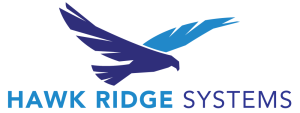 PostProcess Technologies, which provides automated and intelligent post-printing solutions for additive manufacturing, has announced its seventh North American Channel Partner in the last year: Hawk Ridge Systems, the largest global provider of 3D design and manufacturing solutions. This new partnership will serve as a natural extension of Hawk Ridge Systems’ AM solutions portfolio, and the company will now represent PostProcess Technologies’ solution portfolio in select North American territories.
PostProcess Technologies, which provides automated and intelligent post-printing solutions for additive manufacturing, has announced its seventh North American Channel Partner in the last year: Hawk Ridge Systems, the largest global provider of 3D design and manufacturing solutions. This new partnership will serve as a natural extension of Hawk Ridge Systems’ AM solutions portfolio, and the company will now represent PostProcess Technologies’ solution portfolio in select North American territories.
“Hawk Ridge Systems believes in providing turnkey 3D printers for our customers for use in rapid prototyping, tooling, and production manufacturing. Often overlooked, post-printing is a critical part of all 3D printing processes, including support removal and surface finish refinement,” said Cameron Carson, VP of Engineering at Hawk Ridge Systems. “PostProcess Technologies provides a comprehensive line of equipment that helps our customers lower the cost of labor and achieve more consistent high-quality results for our 3D printing technologies, including SL (Vat polymerization), MJF (Sintered polymer), and ADAM (Metal) printing. We vet our partnerships very closely for consistent values and quality, and I was impressed with PostProcess Technologies’ reputation for reliability and quality – an ideal partnership to bring solutions to our customers.”
GEFERTEC and Linde Working Together on 3D Printing Research
In order to investigate the influence of the process gas and the oxygen percentage on 3DMP technology, which combines arc welding with CAD data of metal parts, GEFERTEC GmbH and Linde AG have entered into a joint research project. The two already work closely together – Linde, which is part of the larger Linde Group, uses its worldwide distribution network to supply process gases for 3D printing (especially DMLS/metal 3D printing/LPBF), while GEFERTEC brings its arc machines, which use wire as the starting material to create near-net-shaped parts in layers; conventional milling can be used later to further machine the part after 3D printing is complete.
The 3D printing for this joint project will take place at fellow research partner Fraunhofer IGCV‘s additive manufacturing laboratory, where GEFERTEC will install one of its 3D printers. The last research partner is MT Aerospace AG, which will perform mechanical tests on the 3D printed parts.
Purdue University and USC Researchers Developing New AI Technology
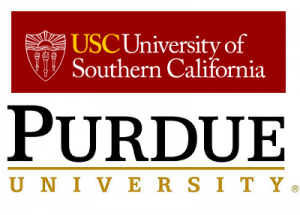 In another joint project, researchers from Purdue University and the University of Southern California (USC) are working to develop new artificial intelligence technology that could potentially use machine learning to enable aircraft parts to fit together more precisely, which means that assembly time can be reduced. The work speaks to a significant challenge in the current AM industry – individual 3D printed parts need a high level of both precision and reproducibility, and the joint team’s AI technology allows users to run software components in their current local network, exposing an API. Then, the software will use machine learning to analyze the product data and build plans to 3D print the specific parts more accurately.
In another joint project, researchers from Purdue University and the University of Southern California (USC) are working to develop new artificial intelligence technology that could potentially use machine learning to enable aircraft parts to fit together more precisely, which means that assembly time can be reduced. The work speaks to a significant challenge in the current AM industry – individual 3D printed parts need a high level of both precision and reproducibility, and the joint team’s AI technology allows users to run software components in their current local network, exposing an API. Then, the software will use machine learning to analyze the product data and build plans to 3D print the specific parts more accurately.
“We’re really taking a giant leap and working on the future of manufacturing. We have developed automated machine learning technology to help improve additive manufacturing. This kind of innovation is heading on the path to essentially allowing anyone to be a manufacturer,” said Arman Sabbaghi, an assistant professor of statistics in Purdue’s College of Science.
“This has applications for many industries, such as aerospace, where exact geometric dimensions are crucial to ensure reliability and safety. This has been the first time where I’ve been able to see my statistical work really make a difference and it’s the most incredible feeling in the world.”
Both 3D Printing and AI are very “hot” right now. Outside of the hype there are many ways that machine learning could be very beneficial for 3D printing in coming years in part prediction, melt pool monitoring and prediction, fault analysis and in layer QA. Purdue’s technology could be a possible step forward to “Intelligent CAD” that does much of the calculation, analysis and part generation for you.
Finalists Announced for Design for Additive Manufacturing Challenge
Additive Industries has announced the finalists for its Additive World Design for Additive Manufacturing Challenge, a yearly competition where contestants redesign an existing, conventionally manufactured part of a machine or product with 3D printing, taking care to use the technology’s unique design capabilities, like custom elements and thin walls. This year, over 121 students and professionals entered the contest, and three finalists were chosen in each category, with two honorable mentions – the Unibody Hydraulic System by from Italy’s Aidro Hydraulics & 3D Printing and the Contirod-Düse from Nina Uppenkam, SMS Group GmbH – in the professional category.
“The redesigns submitted from all over the world and across different fields like automotive, aerospace, medical, tooling, and high tech, demonstrated how product designs can be improved when the freedom of additive manufacturing is applied,” said Daan Kersten, CEO of Additive Industries. “This year again we saw major focus on the elimination of conventional manufacturing difficulties, minimization of assembly and lowering logistical costs. There are also interesting potential business cases within both categories.”
The finalist designs are listed below, and can be seen in the image above, left to right, top to bottom:
- “Hyper-performance suspension upright” from Revannth Narmatha Murugesan, Carbon Performance Limited (United Kingdom, professional)
- “Cutting dough knife” from Jaap Bulsink, K3D (The Netherlands, professional)
- “Cold Finger” from Kartheek Raghu, Wipro3D (India, professional)
- “Brake Caliper” from Nanyang Technological University team (Singapore, student)
- “Cubesat Propellant Tank” from Abraham Mathew, the McMaster University (Canada, student)
- “Twin Spark Connecting Rod” from Obasogie Okpamen, the Landmark University (Nigeria, student)
Marines 3D Printed Repair Part
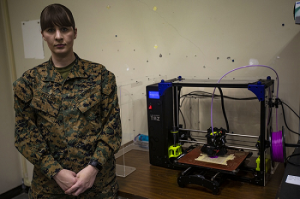
US Marine Corps Lance Cpl. Tracey Taylor, a computer technician with 7th Communications Battalion, aboard Marine Corps Base Camp Hansen in Okinawa, Japan, is one of the Marines that utilize 3D printing technology to expand capabilities within the unit. [Photo: US Marine Corps Cpl. George Melendez]
To save time by moving past the lengthy requisitioning process, 3D printing was used at Marine Corps Base Hawaii, Kaneohe Bay, to create a repair part that would help fix a critical component to increase unit readiness. This winter, Support Company, Combat Logistics Battalion (CLB) 3 fabricated the part for the Electronic Maintenance (EM) Platoon, 3rd Radion Battalion, and both EM technicians and members of CLB-3 worked together to design, develop, and 3D print the part, then repaired the component, within just one month, after having spent almost a year trying to get around delays to fix it.
US Marine Cpl. Anthony Farrington, designer, CLB-3, said that it took about three hours to design the replacement part prototype, and an average between five to six hours to 3D print it, before it was used to restore the unit to full capability.
“With the use of 3D printing, Marines are empowered to create solutions to immediate and imminent challenges through additive manufacturing innovation,” said subject matter expert US Marine Chief Warrant Officer 3 Waldo Buitrago, CLB-3.
“We need to embrace 3D printing and encourage our Marines to express their creativity, which in turn, could lead to solutions in garrison and combat such as in this case study.”
3D Printed Helicopter Blade Mold
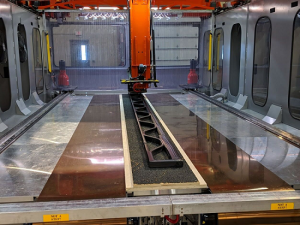 Thermwood and Bell recently worked together to create a 3D printed tool, but not just any 3D printed tool. Thermwood believes that the 3D printed helicopter blade mold is the largest ever 3D printed autoclave-capable tool. Bell, frustrated with expensive tooling that took a long lead time, reached out to Thermwood for help, and the company suggested its LSAM system, with new 60 mm melt core technology. Bell then provided Thermwood with a 20-foot-long, 17-inch-high, 14-inch-wide closed cavity blade mold, and upon receiving both the model and Bell’s tooling requirements, Thermwood began printing the tool with Techmer PM’s 25% carbon fiber reinforced PESU material (formulated specifically for its LSAM additive printing) in a continuous run. The new melt core can achieve a high print rate, even when processing high temperature material, which was great news for Bell.
Thermwood and Bell recently worked together to create a 3D printed tool, but not just any 3D printed tool. Thermwood believes that the 3D printed helicopter blade mold is the largest ever 3D printed autoclave-capable tool. Bell, frustrated with expensive tooling that took a long lead time, reached out to Thermwood for help, and the company suggested its LSAM system, with new 60 mm melt core technology. Bell then provided Thermwood with a 20-foot-long, 17-inch-high, 14-inch-wide closed cavity blade mold, and upon receiving both the model and Bell’s tooling requirements, Thermwood began printing the tool with Techmer PM’s 25% carbon fiber reinforced PESU material (formulated specifically for its LSAM additive printing) in a continuous run. The new melt core can achieve a high print rate, even when processing high temperature material, which was great news for Bell.
Glenn Isbell, Vice President of Rapid Prototyping and Manufacturing Innovation at Bell, said, “Thermwood’s aggressive approach to pushing the boundaries and limitations of traditional 3D printing and machining is exactly what we were looking for.”
The final bond tool was able to maintain the vacuum standards required by Bell for autoclave processing right off the printer, without needing a seal coating. Thermwood will soon 3D print the second half of the blade mold, and both teams will complete further testing on PESU 3D printed molds for the purpose of continued innovation.
Discuss these stories and other 3D printing topics at 3DPrintBoard.com or share your thoughts in the Facebook comments below.
3D Printing News Briefs: November 9, 2018
Buckle your seat belts, because we’ve got a of news to share with you in today’s 3D Printing News Briefs, starting with more event announcements and moving on to several new partnerships, a workshop, and a 3D printing project. Nanogrande introduced its new 3D printer for nanometer metallic particles at Fabtech this week, while Sartomer and Nanoe are launching new 3D printing innovations at formnext. Creatz3D is working to accelerate ceramics 3D printing in Singapore, while partnerships were announced between Valuechain and Clad Korea, PostProcess and Rösler, and Additive Manufacturing Technologies and Mitsubishi Electric. Finally, two Fraunhofer Institutes are hosting an AM materials workshop, and a maker from YouTube channel Potent Printables is sharing a new project.
Nanogrande Introduced First 3D Printer for Nanometer Metallic Particles
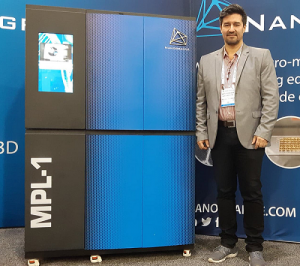 At FABTECH 2018 in Atlanta this week, Nanogrande officially introduced its new 3D printer. The MPL-1, enabled with the company’s Power Layering Technology, is actually the first nanoscale 3D printer for metallic particles in the world, and could successfully open up new 3D printing horizons. Nanogrande has spent years working to develop the new 3D printer.
At FABTECH 2018 in Atlanta this week, Nanogrande officially introduced its new 3D printer. The MPL-1, enabled with the company’s Power Layering Technology, is actually the first nanoscale 3D printer for metallic particles in the world, and could successfully open up new 3D printing horizons. Nanogrande has spent years working to develop the new 3D printer.
“Power Layering, while maximizing particle compaction, allows MPL-1 to use particles of all shapes, sizes and types. With this approach, we can easily print with particles as small as a nanometer, but also particles of 5 microns, what the industrial sector is currently seeking. At this size, the particles stick to each other, virtually eliminating the need for support structures typical to 3D printing. In this way, there is a considerable reduction in post- printing costs,” said Juan Schneider, the President and Founder of Nanogrande.
“Today we are witnessing the culmination of a long process of research and development that has given us the chance to set up a team that generates many innovative ideas. Alone, it is possible to have excellent ideas; but, as a team, we can bring these ideas to life. I am very pleased to highlight the success of the efforts of the people who work for Nanogrande.”
Sartomer Europe Introducing New UV-Curable Resins
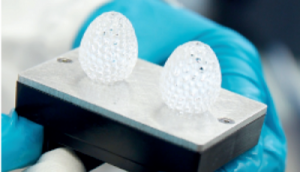 At formnext in Frankfurt next week, the European division of specialty chemical supplier Sartomer, a business unit of Arkema, will be launching new products in its N3xtDimension line of UV-curable engineered resins as part of its new commercial 3D printing-dedicated platform. The new materials will help companies fulfill performance and regulatory requirements for multiple industrial applications, thanks to their excellent tunability and mechanical properties. At its booth H58 in Hall 3.1 at formnext, Sartomer will introduce N3D I-2105, with impact resistance for manufacturing functional parts; N3D-F2115, which can achieve varying levels of flexibility depending on post treatment; and N3D P-2125, which is perfect for prototyping with its homogeneous network and limited evolution of mechanical properties after post-curing is complete.
At formnext in Frankfurt next week, the European division of specialty chemical supplier Sartomer, a business unit of Arkema, will be launching new products in its N3xtDimension line of UV-curable engineered resins as part of its new commercial 3D printing-dedicated platform. The new materials will help companies fulfill performance and regulatory requirements for multiple industrial applications, thanks to their excellent tunability and mechanical properties. At its booth H58 in Hall 3.1 at formnext, Sartomer will introduce N3D I-2105, with impact resistance for manufacturing functional parts; N3D-F2115, which can achieve varying levels of flexibility depending on post treatment; and N3D P-2125, which is perfect for prototyping with its homogeneous network and limited evolution of mechanical properties after post-curing is complete.
“We are addressing the needs of demanding and innovative 3D printing markets by partnering with global leaders to deliver custom material solutions for end-use applications. Through our range of products and services dedicated to additive manufacturing, we are supporting the 3D printing sector as it grows and continues to develop new applications,” said Sumeet Jain, the Global Director for 3D Printing Business at Sartomer.
Nanoe Launches Ceramic and Metal 3D Printer
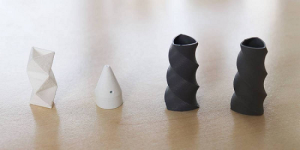 In other formnext news, French company Nanoe, which is a leader in high-tech raw materials and also specializes in ceramics 3D printing, will be introducing its new Zetaprint system for desktop 3D printing of ceramic and metal materials. The team will perform a live demonstration of the 3D printer at the event, and explain the full 3D printing, debinding, and sintering process.
In other formnext news, French company Nanoe, which is a leader in high-tech raw materials and also specializes in ceramics 3D printing, will be introducing its new Zetaprint system for desktop 3D printing of ceramic and metal materials. The team will perform a live demonstration of the 3D printer at the event, and explain the full 3D printing, debinding, and sintering process.
Additionally, the company will be launching its new stainless steel 16L Zetamix filament. These filaments, made up of a ceramic or metal powder and a polymer matrix, can be used to make high density parts in any FDM 3D printer. Nanoe, which is also developing materials in Inconel and titanium, will also soon be launching a complete line of adapted FDM 3D printers. Visit the company at booth A74 in Hall 3.0 next week at formnext to see a live Zetaprint demonstration and 3D printed parts in various Zetamix materials.
Creatz3D Accelerating Ceramics 3D Printing in Singapore
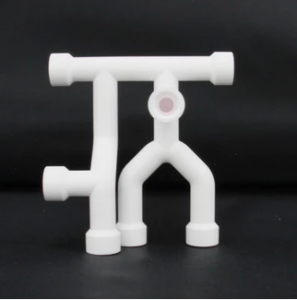 Speaking of ceramics, Creatz3D Ceramics Service Bureau is dedicated to 3D printing ceramics parts. Founded last year, its parent company is Singapore-based 3D printer and AM software solutions seller Creatz3D, which partnered with 3DCeram Sinto in Limoges to create the service. This partnership, signed in 2016, facilitated the first installation in Singapore of 3DCeram Sinto’s Ceramaker 900 Ceramic 3D printer, at the Advanced Remanufacturing Technology Centre. The Creatz3D Ceramics Service Bureau, which offers diverse material options and a hassle-free experience, is the first, and only, ceramics-focused 3D printing service in the country, and is helping to increase awareness and adoption of ceramics for 3D printing.
Speaking of ceramics, Creatz3D Ceramics Service Bureau is dedicated to 3D printing ceramics parts. Founded last year, its parent company is Singapore-based 3D printer and AM software solutions seller Creatz3D, which partnered with 3DCeram Sinto in Limoges to create the service. This partnership, signed in 2016, facilitated the first installation in Singapore of 3DCeram Sinto’s Ceramaker 900 Ceramic 3D printer, at the Advanced Remanufacturing Technology Centre. The Creatz3D Ceramics Service Bureau, which offers diverse material options and a hassle-free experience, is the first, and only, ceramics-focused 3D printing service in the country, and is helping to increase awareness and adoption of ceramics for 3D printing.
“The addition of ceramics to Creatz3D’s portfolio ensures that they stay ahead of the pack in the competitive 3D printing landscape, and their expertise can demonstrate the game-changing capabilities that the technology has to offer to help advance design, engineering, and manufacturing,” said Sean Looi, the General Manager of Creatz3D.
Valuechain Signs Strategic Partnership with Clad Korea
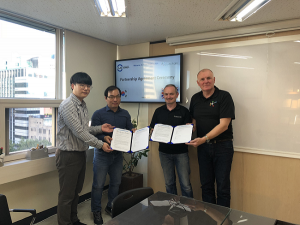 British technology company Valuechain reports that it has signed a strategic partnership with manufacturing company Clad Korea, in order to digitalize 3D printing in East Asia. Both companies will be able to grow their association together in the initial agreement, in addition to bringing Valuechain’s solutions, including its flagship DNA am production control software, to the East Asian AM marketplace. This software addresses 3D printing production process niche requirements, like powder traceability and managing AM build plans.
British technology company Valuechain reports that it has signed a strategic partnership with manufacturing company Clad Korea, in order to digitalize 3D printing in East Asia. Both companies will be able to grow their association together in the initial agreement, in addition to bringing Valuechain’s solutions, including its flagship DNA am production control software, to the East Asian AM marketplace. This software addresses 3D printing production process niche requirements, like powder traceability and managing AM build plans.
“Valuechain’s DNA am technology is a unique offering to the market, with great potential to enable rapid and mass production of additive manufactured parts. As we look to enter the additive manufacturing market ourselves, we believe this product will give us a competitive advantage in the industry, and we’re excited to be able to contribute to the growth of this technology in Asia by helping to deliver this solution throughout South Korea,” said Brandon Lee, the CEO of Clad Korea Co. Ltd.
PostProcess Technologies Partnering with Rösler
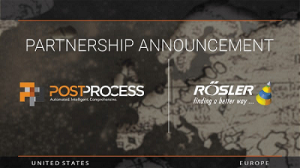 Moving on with strategic partnerships in the 3D printing world, PostProcess Technologies Inc., a pioneer of software-drive 3D post-processing solutions, is working with Rösler Oberflächentechnik GmbH, which sells finishing systems for traditional manufacturing, to bring automated, intelligent post-print solutions to Europe. Rösler will provide PostProcess’ data-driven support removal and surface finishing solutions for 3D printing to the European market, making it the only surface finishing supplier that will be providing solutions tailored to the needs of both traditional and additive manufacturing. The two companies will debut their partnership next week at formnext, with PostProcess’ technology on display in its booth H68, as well as Rösler’s booth E20, both of which are in Hall 3.0.
Moving on with strategic partnerships in the 3D printing world, PostProcess Technologies Inc., a pioneer of software-drive 3D post-processing solutions, is working with Rösler Oberflächentechnik GmbH, which sells finishing systems for traditional manufacturing, to bring automated, intelligent post-print solutions to Europe. Rösler will provide PostProcess’ data-driven support removal and surface finishing solutions for 3D printing to the European market, making it the only surface finishing supplier that will be providing solutions tailored to the needs of both traditional and additive manufacturing. The two companies will debut their partnership next week at formnext, with PostProcess’ technology on display in its booth H68, as well as Rösler’s booth E20, both of which are in Hall 3.0.
“The additive space is rapidly growing, especially in Europe, and as such, the demand for an automated post-printing solution is accelerating. Rösler is a unique partner for PostProcess, bringing expertise in finishing systems with a broad European footprint, thousands of existing customers, and a strong presence across a range of industries that will greatly benefit from PostProcess’ proprietary and integrated software, hardware, and chemistry solution,” said Bruno Bourguet, the Managing Director for PostProcess Technologies.
Additive Manufacturing Technologies Announces Partnership with Mitsubishi Electric
 Sheffield-based Additive Manufacturing Technologies Ltd (AMT) has entered into a partnership with Mitsubishi Electric in order to further develop its PostPro3D system with an integrated automation solution, which could provide a major productivity boost for 3D print post-processing. This new solution is based on Mitsubishi Electric’s MELSEC iQ-F Series compact PLC, HMIs, SCADA and MELFA articulated arm robots. While PostPro3D is already pretty impressive, with its ability to automatically smooth an object’s surface to 1μm precision, AMT wanted to further develop the system with certified automation products so it would be suitable for Industry 4.0. Now, PostPro3D is equipped with a Mitsubishi Electric power supply and low voltage switchgear, servo drives and motors, FR-D700 frequency inverters and the optional six-axis robot arm.
Sheffield-based Additive Manufacturing Technologies Ltd (AMT) has entered into a partnership with Mitsubishi Electric in order to further develop its PostPro3D system with an integrated automation solution, which could provide a major productivity boost for 3D print post-processing. This new solution is based on Mitsubishi Electric’s MELSEC iQ-F Series compact PLC, HMIs, SCADA and MELFA articulated arm robots. While PostPro3D is already pretty impressive, with its ability to automatically smooth an object’s surface to 1μm precision, AMT wanted to further develop the system with certified automation products so it would be suitable for Industry 4.0. Now, PostPro3D is equipped with a Mitsubishi Electric power supply and low voltage switchgear, servo drives and motors, FR-D700 frequency inverters and the optional six-axis robot arm.
“To realise our concept, we needed an automation partner that could provide the whole range of machine control systems, as well as the actual robotics. This is fundamental to truly integrate our machine into the production line of the future as well as to benefit from a lean, single vendor distribution model,” explained Joseph Crabtree, CEO at AMT.
“Mitsubishi Electric was the clear choice because it offers a one stop shop for state-of-the-art automation solutions. In this way, we can be sure that the different components are compatible and can share data. Overall, the company can offer us products that adhere to UL, CE as well as Industry 4.0 requirements.”
Fraunhofer AM Materials Workshop
 On November 29 and 30 in Dresden, Germany, Fraunhofer IKTS and Fraunhofer IWS are holding a workshop called “Hybrid materials and additive manufacturing processes.” The two institutes are working together to organize the workshop, which will be held in English and discuss innovative technologies for 3D printing metallic and ceramic components, in addition to application-specific manufacturing of material hybrids. Participants in the workshop’s practical insight sessions will be able to see diverse AM devices for multimaterial approaches live and in action.
On November 29 and 30 in Dresden, Germany, Fraunhofer IKTS and Fraunhofer IWS are holding a workshop called “Hybrid materials and additive manufacturing processes.” The two institutes are working together to organize the workshop, which will be held in English and discuss innovative technologies for 3D printing metallic and ceramic components, in addition to application-specific manufacturing of material hybrids. Participants in the workshop’s practical insight sessions will be able to see diverse AM devices for multimaterial approaches live and in action.
“Why is that interesting? Additive manufacturing technologies for material hybrids open up new possibilities in production for diverse industrial branches,” Annika Ballin, Press and Public Relations for Fraunhofer IKTS, told 3DPrint.com. “It is not only possible to realize complex geometries, but also to functionalize components (sensors, heaters), to individualize production (labeling, inscriptions) and to combine different materials properties in one component (conductive/insulating, dense/porous etc.).”
The workshop, which costs €750, will be held at Fraunhofer Institute Center Dresden, and registration will continue until November 22.
DIY 3D Printed Linear Servo Actuators by Potent Printables
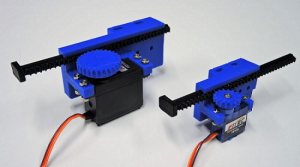 A maker named Ali, who runs the Potent Printables YouTube channel, recently completed a neat design project – 3D printed linear actuators. Ali, who was partly inspired by a Hackaday post, said that the project has received a great response on both Twitter and Instagram. He designed the parts in SOLIDWORKS, and controls them with an Arduino Uno. The simple rack-and-pinion design, perfect for light loads, comes in two sizes for different space constraints and force outputs.
A maker named Ali, who runs the Potent Printables YouTube channel, recently completed a neat design project – 3D printed linear actuators. Ali, who was partly inspired by a Hackaday post, said that the project has received a great response on both Twitter and Instagram. He designed the parts in SOLIDWORKS, and controls them with an Arduino Uno. The simple rack-and-pinion design, perfect for light loads, comes in two sizes for different space constraints and force outputs.
“Each design has a pinion that has to be glued to a servo horn, and a selection of rack lengths to suit your needs,” Dan Maloney wrote in a new Hackaday post about Ali’s project. “The printed parts are nothing fancy, but seem to have material in the right places to bear the loads these actuators will encounter.”
Check out the video below to see the 3D printed linear actuators for yourself:
Find Prodways, Farsoon, Stratasys, Sabic and more 3D printing at Formnext 2018
 Formnext, the largest additive manufacturing and 3D printing trade show in Europe will take place in three weeks time from the 13th through to the 16th November 2018. In the lead up to one of the most highly anticipated shows of the year, 3D Printing Industry is collecting all of the latest product release teasers […]
Formnext, the largest additive manufacturing and 3D printing trade show in Europe will take place in three weeks time from the 13th through to the 16th November 2018. In the lead up to one of the most highly anticipated shows of the year, 3D Printing Industry is collecting all of the latest product release teasers […]Formnext 2018 3D printing premieres to see in Frankfurt next month
Use of Simulation to Evaluate How Well 3D Printing Bioinks Work
Plenty of research has been completed regarding the different materials we use to create biomedical parts. Many innovative bioinks – biomaterials loaded with cells to 3D print biological structures – have been developed for 3D bioprinting purposes, from materials like stem cells, gelatin hydrogels, and even sugarcane waste. 3D bioprinting itself is changing the field of medicine as we know it, because we can now fabricate patient-specific human tissues in a laboratory setting.
However, this technology only works if researchers and doctors have good bioinks on hand…and how do we know the materials are good? It’s expensive, difficult, and can take a long time to evaluate if these bioinks are 3D printable. That’s why many many researchers, like a team from the Wallenberg Wood Science Center (WWSC) in Sweden are starting to rely more and more on computer simulations to optimize these biomaterials.
 Kajsa Markstedt, a PhD student of chemistry and chemical engineering and biopolymer technology at WWSC, and her colleagues recently partnered up with Johan Göhl’s Computational Engineering and Design team at the Fraunhofer Chalmers Centre (FCC) to test out a process for using a computational fluid dynamics tool to model the way bioinks are dispensed.
Kajsa Markstedt, a PhD student of chemistry and chemical engineering and biopolymer technology at WWSC, and her colleagues recently partnered up with Johan Göhl’s Computational Engineering and Design team at the Fraunhofer Chalmers Centre (FCC) to test out a process for using a computational fluid dynamics tool to model the way bioinks are dispensed.
“As well as allowing us to evaluate the printability of a bioink, simulations could also help us choose the printing technique that should be employed depending on the target tissue. Such techniques vary depending on the viscosity and nature of the ink being printed, and include ink-jet printing, laser-induced forward transfer, microvalve- and extrusion-based bioprinting,” said Markstedt.
“To model how a bioink is dispensed, we used its mass flow rate and density as input in our calculations. These parameters are the ones most commonly evaluated in experiments when printing designs such as lines, grids or cylinders.”
The team published a paper, titled “Simulations of 3D bioprinting: predicting bioprintability of nanofibrillar inks,” in the Biofabrication journal; co-authors include Göhl, Markstedt, Andreas Mark, Karl Håkansson, Paul Gatenholm, and Fredrik Edelvik.
The abstract reads, “To fulfill the multiple requirements of a bioink, a wide range of materials and bioink composition are being developed and evaluated with regard to cell viability, mechanical performance and printability. It is essential that the printability and printing fidelity is not neglected since failure in printing the targeted architecture may be catastrophic for the survival of the cells and consequently the function of the printed tissue. However, experimental evaluation of bioinks printability is time-consuming and must be kept at a minimum, especially when 3D bioprinting with cells that are valuable and costly. This paper demonstrates how experimental evaluation could be complemented with computer based simulations to evaluate newly developed bioinks. Here, a computational fluid dynamics simulation tool was used to study the influence of different printing parameters and evaluate the predictability of the printing process. Based on data from oscillation frequency measurements of the evaluated bioinks, a full stress rheology model was used, where the viscoelastic behaviour of the material was captured.”

Visual comparison between (L) photo of printed grid structure and (R) simulation of printed grid structure when using 4% CNF ink.
According to Markstedt, 3D printability of a bioink is most often determined by the ratio of line width to the diameter of a 3D printer’s nozzle, the curvature of 3D printed lines, and how many layers can be printed before structure collapse. The FCC scientists also used a dynamic contact-angle model, which uses surface tension and a contact angle as input, to the bioinks’ wettability on a substracte.
“In our simulations, we also used the printing path of a grid structure as input,” Markstedt said.
 The full rheology model was based on the material’s viscoelastic behavior and the ink-oscillation frequency data obtained in the team’s experiments. For cellulose nanofibril (CNF) bioinks with different rheological properties, simulations produced outcomes that were similar to experimental results in lab evaluations. Additionally, the researchers could use the computer model the follow the real-time 3D printing process and study the behavior of various inks during dispensing.
The full rheology model was based on the material’s viscoelastic behavior and the ink-oscillation frequency data obtained in the team’s experiments. For cellulose nanofibril (CNF) bioinks with different rheological properties, simulations produced outcomes that were similar to experimental results in lab evaluations. Additionally, the researchers could use the computer model the follow the real-time 3D printing process and study the behavior of various inks during dispensing.
Markstedt said, “In experimental evaluations, we often only have the properties of the final, printed grid structure to go on. This is a time-consuming way to develop new bioinks or to optimize printing parameters for a specific ink. It is also expensive since the prepared bioink containing cells is precious.”
It’s also important to test the biostructure soon after it’s 3D printed, because the cells are still viable at that point; this limits how long evaluations can last.
“This often leads to many bioinks being printed at printing parameters that have not been optimized for a specific bioink composition. The result is that the right architecture is not produced, which can be catastrophic because the printed tissue does not function properly,” said Markstedt. “For example, the printed line may be too thin causing the structure to break, or too thick, which prevents nutrients and oxygen reaching all the cells in the bioink.”

Comparison of the distribution of viscoelastic stresses in lines printed with 4% CNF ink and ink 6040 at 0.3, 0.4 and $0.5,mathrm{mm}$ distance between nozzle and plate.
The researchers are fairly certain that their new simulation tool will be able to provide them with far more feedback during 3D printing, like how viscoelastic- and shear stresses are distributed in the ink, while still surmounting all of these issues.
Markstedt said, “This provides a better understanding of why certain printer settings and bioinks work better than others. For example, it allows us to isolate individual parameters, such as printing speed, printer nozzle height, ink flow rate and printing path to study how they influence printing.”
The team will now work on modeling bioink flow inside nozzle geometries that are pre-defined.
“This addition to the model will allow us to observe what effect shear stresses from the nozzle have on the printing process. This will help us to determine how different printing pressures and nozzle shapes affect the bioprintability of a bioink,” explained Göhl.
Discuss this story and other 3D printing topics at 3DPrintBoard.com, or share your thoughts below.
[Source: Physics World / Images: Göhl et. al.]



